Malcolm R. Campbell's Blog, page 19
October 26, 2023
Rats, our indoor/outdoor cat missed a few
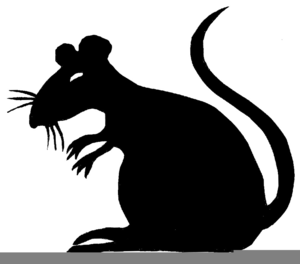 Goodness knows, he left enough on the front porch. He must have slacked off when we didn’t bring them into the house and fry them up with sawmill gravy. I swept them off into the yard hoping they’d serve as warnings to new rats moving into the area.
Goodness knows, he left enough on the front porch. He must have slacked off when we didn’t bring them into the house and fry them up with sawmill gravy. I swept them off into the yard hoping they’d serve as warnings to new rats moving into the area.
Apparently not.
So as time went by, the rats that did not heed the dead in the yard and set up housekeeping in the crawl space and caused $2,500 worth of damage.
I guess we should have crawled around down there more often. Or at least once. But there was no appeal to that, so we didn’t. The exterminators are under the house now. Better them than me. It’s almost worth $2,500 to never go in there.
The exterminator protects the house against termites. So how the guys stumbled across the rat infestation, I don’t know. Fortunately, no rats got into the main part of the house. And maybe as part of our crawl space investment, they (the exterminators) will post “warning signs” to keep new uninvited guests out of the place.
My tip to you–part of my lifelong learning experience–is if you have a crawl space, crawl inside from time to time. Make it a hobby.
–Malcolm
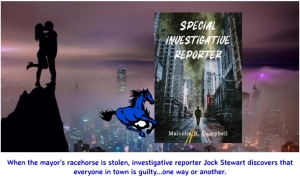 When Malcolm isn’t writing magical realism or posts about rats, he’s writing satire.
When Malcolm isn’t writing magical realism or posts about rats, he’s writing satire.
October 24, 2023
‘Cowboy in a Corporate World,’ by Ray Marxer
“Stretching 380,000 acres from the Beaverhead Valley through the Blacktail Range and into the Centennial Valley, the Matador is teeming with wildlife, cold trout streams, and healthy soil and grasslands. A working ranch, caring for 12,000 head of cattle outside of Dillon, Montana, Matador Ranch and Cattle is a fusion of the former Beaverhead and Selkirk Ranches, Matador Ranch and Cattle is honored to uphold and enhance the high standards in agricultural and environmental practices while advancing new and innovative projects on the ground.” – Matador Ranch website
From the Publisher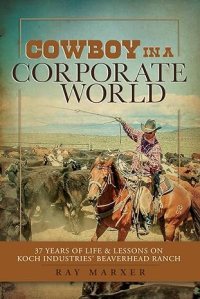 “A Montana Cowboy. A Large Corporation. A Clash of Values.
“A Montana Cowboy. A Large Corporation. A Clash of Values.
“When Ray was hired on to the Matador cowboy crew in 1974, his youthful dreams came true. Montana’s sprawling Matador Cattle Company ranch had genuine cow camps, horses galore, and thousands of cattle. The 240,000-acre ranch, owned since 1951 by Koch Industries Inc., was known internally as the Beaverhead Ranch.
“Beyond his dreams, Ray would manage the productive ranch for twenty-one years as it expanded to over 530 square miles of prime Montana ranch land and open space. As ranch manager, Ray led Montana’s Matador to new heights of environmental and economic excellence. What happened in 2011, as he approached the finish line of a stellar career is staggering.
“Woven throughout this memoir of family, faith, and work are nuggets of wisdom and valuable secrets for students planning a corporate career in ranching or corporate management. This true story will appeal to lovers of the American West, history fans, ranchers, and anyone who ever wanted to be a cowboy.”
This 352-page book was published in August 2022 by Raymond Marxer
About the Author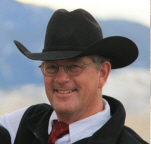 Marxer
Marxer“Ray Marxer, a 4th-generation Montana agricultural producer, worked 37 years for Koch Industries, Inc. on the massive Matador Cattle Company ranch in southwest Montana. As Ranch Manager for 21 of those years, Ray’s innovative approach to business guided the ranch to consistent annual profit and a record 11-year tenure average for employees.
“Environmental achievements led to numerous stewardship awards. Six national-level awards included the National Cattleman’s Beef Association Environmental Stewardship Award and the International Association of Fish and Wildlife Agencies Private Lands Stewardship Award.
“Ray served on several Governor-appointed boards for wildlife, land use, and animal health, as well as many organizational committees and boards. He runs a few cows in his retirement, in addition to his consulting and artificial insemination business, Ranch Services West.
“Ray’s passion, superseded only by his faith and family, is for the heritage of the American West, as well as providing help and encouragement to aspiring ranch producers.”
Montana Standard ReviewThe reader soon realizes the author is a rancher to his core. Clues include observations that horses are one of God’s greatest gifts to mankind and that carefully crossbred cows possess beautiful udders.
The reader recognizes that the author has managed a massive cattle ranch for a distant corporation when he writes about the often unwelcome dictates passed down by dudes in suits from Koch Industries in Kansas.
Ray Marxer’s recently self-published book, “Cowboy in a Corporate World,” corrals a diverse herd of ranching anecdotes, facts, triumphs and struggles, along with testimonies about religious faith and more into 246 pages.
The book is clearly written, easy to follow and features photos from Susan Marxer, the author’s wife.
–Malcolm
October 23, 2023
Years ago, our first wine was usually Mateus
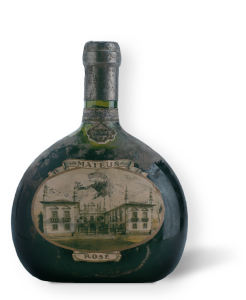 When I was in college, the wine hidden in dorm rooms and under the seats of our cars was usually Mateus. This rose wine from Portugal came on the scene in 1942 and was a part of rapidly developing wine markets in the U.S., U.K., and elsewhere. It’s a nostalgic drink for my generation now, though I haven’t had rose wine for years.
When I was in college, the wine hidden in dorm rooms and under the seats of our cars was usually Mateus. This rose wine from Portugal came on the scene in 1942 and was a part of rapidly developing wine markets in the U.S., U.K., and elsewhere. It’s a nostalgic drink for my generation now, though I haven’t had rose wine for years.
According to the Wikipedia entry, “Sogrape, the family company which owns the brand and which is the largest wine producer in Portugal, has more recently diversified into other areas of the Portuguese wine industry, as the popularity of its Mateus brand has declined. In the UK in 2002, the wine was re-packaged and relaunched in a deliberate effort to capitalise on 1970s nostalgia, although the wine itself had already been made less sweet and slightly more sparkling, in response to modern popular preference for slightly drier wine. The wine continues to be sold, however, in its distinctive narrow-necked, flask-shaped bottle, with unique “baroque historic mansion” label (Mateus Palace in Vila Real, Portugal) and real cork stopper, but also comes with a screw top from some distributors in Northern European countries and the U.K. market.”
“We” saw drinking people in groups: the Mateus group, the Budweiser group, and the bourbon group. We seldom mixed people from the non-wine groups because–how do I say this?–they had no culture and brains the size of raisins. Most of us grew up and decided that rose wines were pretty much like Kool-Aid. After a brief flirtation with Christian Brothers Napa Rose, we left wine for beer and cocktails because those were “adult” drinks, and becoming adults seemed like an important rite of passage.
Now I drink wine or Scotch because they require no mixing and no expensive selection of the supplies needed for cocktails. And when I drink wine, it’s always dark red. But when I think of the wonder years, I recall Mateus as a part of growing up.
–Malcolm
October 22, 2023
Have you seen any Hodags lately?
One of the best vacations we ever had was a trip to Rhinelander, Wisconsin where some friends of my Illinois grandparents owned some cabins on nearby Pelican Lake. We spent most of our time swimming or trying to catch a Pike or a Musky. We came back with a lot of crappies while the big fish illuded us. We were warned not to stay out on the lake after dark because we might end up as bait for a fearsome home Hodag.

I mean, who the hell wanted to confront that? We always brought to boat back to the cabins before sunset. Years ago, a group of us were chewing the fat at a north Georgia museum when the guy from Wisconsin said he wished he were sitting in a boat in the middle of Pelican Lake fishing for pike. We said we’d done that, too. He thought we were making it up until we mentioned the Hodag.
It was apparently discovered in 1893. According to Rhinelander’s website, “An expanded edition of “Fantastic Beasts and Where to Find Them”—the book about the magical creatures that populate the Harry Potter series, supposedly written by famed magizoologist Newt Scamander—was released in 2017 and included an entry on the Hodag. Scamander’s description of the Hodag matches previous accounts, identifying the creature as roughly the size of a large dog and horned with a frog-like head and glowing, red eyes. The book’s entry also says that “like the Snallygaster, the Hodag is a North American creature whose antics have excited considerable Muggle interest and curiosity.” (Ain’t that the truth?)
We knew he wasn’t making this up.
 No doubt the cabins are long gone. But they make for fond memories of spending time with a couple who loved the lake, the fishing, the chipmunks that ran wild and could be tempted with peanuts we dangled on strings, and even the “monster” hiding out there in the dark. In all ways, the place was heaven and I have always wished that a ripple in the space-time continuum would make it possible to go back.
No doubt the cabins are long gone. But they make for fond memories of spending time with a couple who loved the lake, the fishing, the chipmunks that ran wild and could be tempted with peanuts we dangled on strings, and even the “monster” hiding out there in the dark. In all ways, the place was heaven and I have always wished that a ripple in the space-time continuum would make it possible to go back.
Maybe the Hodag would meet us for a couple of Pabst Blue Ribbon beers at the annual Hodag festival. Now that would be something to write home about.
–Malcolm
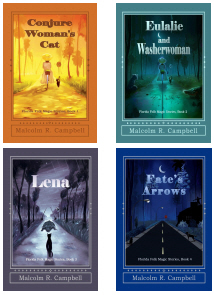 Malcolm R. Campbell is the author of the Florida Folk Magic Series which, sad to say, has no Hodags in it.
Malcolm R. Campbell is the author of the Florida Folk Magic Series which, sad to say, has no Hodags in it.
October 21, 2023
I lost interest in Hallowe’en when filling a candy sack became a business
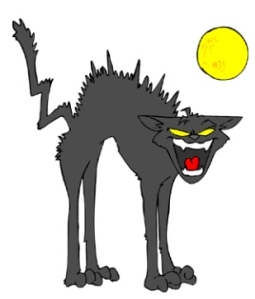 Back in the old days, kids walked from house to house when they went trick or treating. Parents often accompanied the younger kids and that was okay. The last neighborhood I lived in before moving to the country was a subdivision. Kids–up to ages long past their treat-or-treating years came by car. The cars went from subdivision to subdivision. Naturally, that was a greedy expediency many of us didn’t like and accounted for the fact we didn’t know most of the people who rang the doorbell.
Back in the old days, kids walked from house to house when they went trick or treating. Parents often accompanied the younger kids and that was okay. The last neighborhood I lived in before moving to the country was a subdivision. Kids–up to ages long past their treat-or-treating years came by car. The cars went from subdivision to subdivision. Naturally, that was a greedy expediency many of us didn’t like and accounted for the fact we didn’t know most of the people who rang the doorbell.
There’s nobody out here on my rural road to ring the doorbell on Hallowe’en, but I keep my porch light off to indicate we’re not playing the game.
In addition to the caravans of cars bringing kids from the far side of town, Hallowe’en lost its lustre when kids expected a handful of full-sized candy bars: like I can afford 4-5 bars per person for a hundred people. Greed took the fun out of it. And the tricks got worse, too–actual vandalism instead of the more lame TP in the trees and soaped windows.
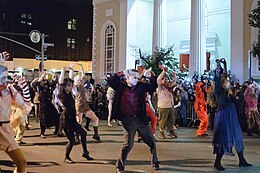 Greenwich Village Parade
Greenwich Village Parade
I still spell “Hallowe’en” with an apostrophe because, after all, the word is a contraction for Hallowed Evening. Most people don’t know that and more’s the pity. It’s okay, I think, to honor the dead, though I don’t believe in this nonsense that the so-called veil between worlds is thin on this holiday allowing more interaction between spirits and people. But, like the otherwise logical people who hang horseshoes over their doors “just in case,” you won’t find me anywhere near a cemetery on Hallowe’en.
Meanwhile, if you happen to walk down my road Tuesday night on All Hallows Eve without waking up ten thousand snarling dogs, I won’t be leaving a porch light on for you.
–Malcolm
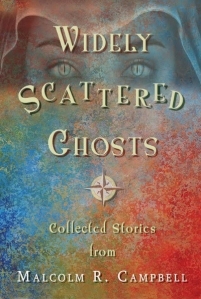 Malcolm R. Campbell is the author of the short story collection “Widely Scattered Ghosts.”
Malcolm R. Campbell is the author of the short story collection “Widely Scattered Ghosts.”
October 19, 2023
Addictive Reading: Reference Books
Not long after we were married, my wife and I discovered that both of us love reading reference books, primarily dictionaries and enclopedias and–in my case–Brewer’s Dictionary of Phrase and Fable. Contrary to what our critics say, we don’t walk to the book shelf, pull out a reference book, and start reading. No, it starts innocently enough. We’re there to look something up but, en route, we see other interesting entries and find ourselves engrossed in them.
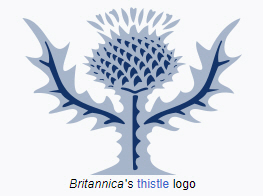 My family started out with Compon’s Encyclopedia when my brothers and I were in grade school and junior high, and then moved on to the Encyclopædia Britannica which thereafter became my favourite. It was published as a physical book from 1768 to 2010, and there after as an online publication. My wife’s family had World Book. My Scot’s ancesters would approve of the thistle.
My family started out with Compon’s Encyclopedia when my brothers and I were in grade school and junior high, and then moved on to the Encyclopædia Britannica which thereafter became my favourite. It was published as a physical book from 1768 to 2010, and there after as an online publication. My wife’s family had World Book. My Scot’s ancesters would approve of the thistle.
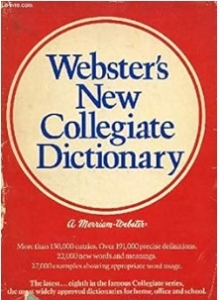
My dictionary of choice is Webster’s New Collegiate Dicitionary which is listed with a publication date of 1977, though I think my copy came out before that. I use it now because the spellings in it are those I grew up with and refuse to change. You’ll never find me using the words “donut” or “plow” because they look flat wrong. The versions of words I use are, in current dictionaries, listed as “British Spellings” even though I learnt them in the Florida school system. If I can’t find a word here, it’s not a word. Needless to say, this view has caused problems with teachers and editors, but I always tell them to suck it up and let the old guy have his way.
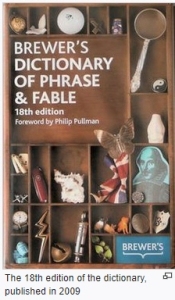 My favourite reference book, which I see I mentioned on this blog about twenty years ago, is Brewer’s Dicitionary of Phrase and Fable. It’s very easy to get lost for hours in this one. Brewer’s, which has been around since 1870, is described by Wikipedia “is a reference work containing definitions and explanations of many famous phrases, allusions, and figures, whether historical or mythical. The “New Edition revised, corrected, and enlarged” from 1895 is now in the public domain, and Web-based versions are available online. The most recent version is the 20th edition, published in November 2018 by Chambers Harrap Publishers.”
My favourite reference book, which I see I mentioned on this blog about twenty years ago, is Brewer’s Dicitionary of Phrase and Fable. It’s very easy to get lost for hours in this one. Brewer’s, which has been around since 1870, is described by Wikipedia “is a reference work containing definitions and explanations of many famous phrases, allusions, and figures, whether historical or mythical. The “New Edition revised, corrected, and enlarged” from 1895 is now in the public domain, and Web-based versions are available online. The most recent version is the 20th edition, published in November 2018 by Chambers Harrap Publishers.”
I think I last mentioned it on this blog about twenty years go. None the less, it sits close at hand on my bookshelf and has been responsible for many hours of reading what I really didn’t need to read. I have noticed, however, that when reading reference books, one comes across a lot of things he didn’t know but needed to know. Now that’s synchronicity.
–Malcolm
Malcolm R. Campbell is the author of contemporary fantasy, magical realism, and paranormal stories and novels.
October 18, 2023
I stand with Israel
While I think the creation of Israel by the British was bound to create a focus for fighting that would (apparently) last for all time and while I think Israeli treatment of Palestinian interests has been far from perfect, I stand by the country’s right to defend itself and for Jewish people worldwide to have the right to live in harmony without being targeted by rising antisemitism.
It’s intolerable that Jews, according to the FBI, faced more hate crimes in 2022 than any other religious group. This makes no sense to me any more than progressive college students supporting Hamas makes any sense to me.
According to a PBS story, “The rise in Jew-hatred in the U.S. is not limited to white supremacists. It said that “the antisemitism of the far-right and far-left are pushing into the mainstream of American culture and politics from both sides.” The intolerance is so old that it’s difficult to sort it out other than to say it often leads to spurious beliefs held by the Nazis during WWII.
 The Anti-Defamation League exists “To stop the defamation of the Jewish people and to secure justice and fair treatment to all.” I don’t think that’s too much to ask. According to the ADL website, “Our values guide our internal culture and shape the approach we take to our programs and initiatives externally. Confronting antisemitism, our founders established ADL based on their Jewish values. We build on their legacy as we speak out on behalf of all marginalized communities across the country and around the globe.”
The Anti-Defamation League exists “To stop the defamation of the Jewish people and to secure justice and fair treatment to all.” I don’t think that’s too much to ask. According to the ADL website, “Our values guide our internal culture and shape the approach we take to our programs and initiatives externally. Confronting antisemitism, our founders established ADL based on their Jewish values. We build on their legacy as we speak out on behalf of all marginalized communities across the country and around the globe.”
 The recent attacks against Israel some from a terrorist organization supported by rogue states. Why do so many Americans support this? Apparently, they have been brainwashed by old myths and old fears. I have no tolerance for that any more than I have any tolerance for those who said the 9/11 attacks were justified and proclaimed their support for Bin Laden. They are like those who support the KKK.
The recent attacks against Israel some from a terrorist organization supported by rogue states. Why do so many Americans support this? Apparently, they have been brainwashed by old myths and old fears. I have no tolerance for that any more than I have any tolerance for those who said the 9/11 attacks were justified and proclaimed their support for Bin Laden. They are like those who support the KKK.
I’m a pacifist and cannot support violence against individuals or legal states of any kind and so I fear that those who openly support Hamas are creating a larger problem that ensures the violence against Israel will continue. And it will probably never end.
October 17, 2023
Story – the power of words
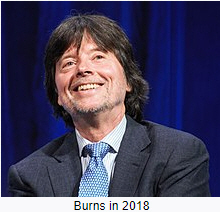 “The only thing that changes people is storytelling. If you tell a story then it’s either going to change somebody not at all, fundamentally or more often than not just at the edges and imperceptibly and maybe even enough so people will take it.” – Ken Burns
“The only thing that changes people is storytelling. If you tell a story then it’s either going to change somebody not at all, fundamentally or more often than not just at the edges and imperceptibly and maybe even enough so people will take it.” – Ken Burns
From a different perspective, Neil Gaiman has a strong view of the power of words when they’re shaped into a story, saying (for example), “Stories may well be lies, but they are good lies that say true things, and which can sometimes pay the rent.”
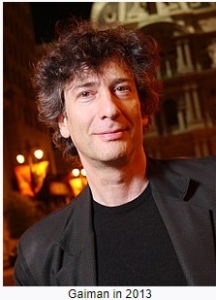 Wikipedia writes that “Storytelling is the social and cultural activity of sharing stories, sometimes with improvisation, theatrics or embellishment. Every culture has its own stories or narratives, which are shared as a means of entertainment, education, cultural preservation or instilling moral values. Crucial elements of stories and storytelling include plot, characters and narrative point of view. The term “storytelling” can refer specifically to oral storytelling but also broadly to techniques used in other media to unfold or disclose the narrative of a story.”
Wikipedia writes that “Storytelling is the social and cultural activity of sharing stories, sometimes with improvisation, theatrics or embellishment. Every culture has its own stories or narratives, which are shared as a means of entertainment, education, cultural preservation or instilling moral values. Crucial elements of stories and storytelling include plot, characters and narrative point of view. The term “storytelling” can refer specifically to oral storytelling but also broadly to techniques used in other media to unfold or disclose the narrative of a story.”
One primary focus after a funeral is telling stories about the dearly departed. Through them, we not only share our memories, often with smiles and laughter. Doing this is universal and so patently human. Unless the deceased is famous, these stories represent the last time many of the tales will be told, and the memories are put on display for younger generations. It’s a sweet time.
We tend to share a lot of “remember when” yarns when we talk in bars, barbecues, reunions, and company picnics. Morals, history, events, and points of view are all part of the mix. If you look through the comments in an old high school or college yearbook, you’ll find a lot of history about the students and faculty.
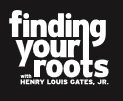 Without all this sharing of events from our shared past, I think most of us would feel disconnected and alone. It’s as though stories flow through our veins. In many episodes of “Finding Your Roots” with Henry Louis Gates, a fair number of people appear on the show with no idea about their ancestries. Sometimes they never know their parents, much less their grandparents. Or, for a variety of reasons, their parents never shared any stories about grandparents and great-grandparents. So they were adrift in time and space.
Without all this sharing of events from our shared past, I think most of us would feel disconnected and alone. It’s as though stories flow through our veins. In many episodes of “Finding Your Roots” with Henry Louis Gates, a fair number of people appear on the show with no idea about their ancestries. Sometimes they never know their parents, much less their grandparents. Or, for a variety of reasons, their parents never shared any stories about grandparents and great-grandparents. So they were adrift in time and space.
I know who my grandparents were because I met them and heard stories about them and read their letters to my parents. What a pity that so many people have no stories to connect them to their familial past. So much of what should be close to us remains unknown due to the lack of stories.
Ken Burns’ story in last night’s episode about the slaughter of the buffalo in the years prior to the 1890s, wasn’t a story we wanted to hear. But we had to hear it. It’s our heritage, our past, and a defining period in our history. Once you hear this story you will be changed. That’s what stories do for better or worse.
October 16, 2023
‘Oahspe’ by John Ballou Newbrough
Oahspe: A New Bible is a book published in 1882, purporting to contain “new revelations” from “…the Embassadors of the angel hosts of heaven prepared and revealed unto man in the name of Jehovih…” It was produced by an American dentist, John Ballou Newbrough (1828–1891), who reported it to have been written by automatic writing, making it one of a number of 19th-century spiritualist works attributed to that practice. The text defines adherents of the disciplines expounded in Oahspe as “Faithists.” – Wikipedia
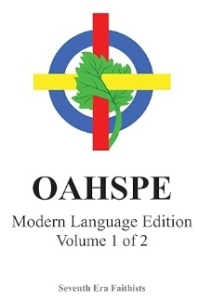 Like The Urantia Book, I stumbled across Oahspe forty years ago. It was interesting but did not change my belief system. I was drawn to it because I had been experimenting with automatic writing, writing that is done while a person is more or less in a trance in order to form a closer connection with–as we thought of them–higher spiritual powers. I could easily hypnotize myself or enter a deep alpha brain wave state, but whether I held a pen or sat with my fingers on a typewriter keyboard, the experiments went nowhere.
Like The Urantia Book, I stumbled across Oahspe forty years ago. It was interesting but did not change my belief system. I was drawn to it because I had been experimenting with automatic writing, writing that is done while a person is more or less in a trance in order to form a closer connection with–as we thought of them–higher spiritual powers. I could easily hypnotize myself or enter a deep alpha brain wave state, but whether I held a pen or sat with my fingers on a typewriter keyboard, the experiments went nowhere.
Now, when I looked up the book to see if it were still around, I found a whole new printing of it with a slick cover and updated language. In general, the book did not receive many positive words from the critics.
From the Publisher“This modern language Oahspe replaces the archaic English language used in older editions. It comprises a 2 volume set of 39 interior books. Volume 1 contains the first 27 books and Volume 2 contains the remainder. Look for OAHSPE Modern Language Edition, Volume 2 of 2 on Amazon.com. A unique book with a message to all humanity, Oahspe reveals the spiritual realms of heaven and beyond. It includes a cosmology which proclaims a living creation maintained by an everpresent Creator whose person and form manifests as the Spiritual and Corporeal Universe.
“Besides revealing a spiritually-based explanation of physical science, Oahspe contains heavenly revelations in chronologically-ordered accounts that describe human origin and development from 72,000 years ago. Humanity’s progress is seen in the context of cyclical events associated with the orbital travels of the earth and solar system. Each traversed region imparts varying conditions of light to the Earth. And this, in turn, engenders spiritual and physical consequences for Earth and its inhabitants, a result of which is the rise and fall of civilizations. Oahspe tells of many long forgotten prehistoric civilizations, including the “pre-flood” inhabitants of a submerged continent. Oahspe also explains how such celestial conditions can be known beforehand using methods of prophecy including signs of the times, tables used since ancient times, and methods of developing prophetic senses.
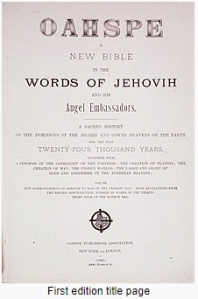 “Oahspe also provides missing details of ancient historical records regarding the origins of Earth’s major religions. Among them are life stories and teachings of the great prophets and law-givers from the various divisions of the earth, such as Zarathustra of Persia, Brahma, Capilya and Sakaya of India, Abraham and Moses of Egypt, Joshu of Nazareth, Eawahtah of the Americas, and Po, Chine and Confucius of China. Their teachings and doctrines are presented with lessons for a contemporary perspective on a new age that lights the way to Peace and Harmony through spiritual progress. According to Oahspe, all humanity has the responsibility to assist in its own development; and to that end, Oahspe provides ample guidelines for ethical conduct in our day. The book also previews the future, with prophecies and guideposts for the eventual establishment of the Creator’s “kingdom on earth” for all humanity. Oahspe, first published in 1882, is heaven’s gift for our times, and is now available in paperback for the first time in modern language.”
“Oahspe also provides missing details of ancient historical records regarding the origins of Earth’s major religions. Among them are life stories and teachings of the great prophets and law-givers from the various divisions of the earth, such as Zarathustra of Persia, Brahma, Capilya and Sakaya of India, Abraham and Moses of Egypt, Joshu of Nazareth, Eawahtah of the Americas, and Po, Chine and Confucius of China. Their teachings and doctrines are presented with lessons for a contemporary perspective on a new age that lights the way to Peace and Harmony through spiritual progress. According to Oahspe, all humanity has the responsibility to assist in its own development; and to that end, Oahspe provides ample guidelines for ethical conduct in our day. The book also previews the future, with prophecies and guideposts for the eventual establishment of the Creator’s “kingdom on earth” for all humanity. Oahspe, first published in 1882, is heaven’s gift for our times, and is now available in paperback for the first time in modern language.”
I see no reason to read it again and find the book’s description spurious. And yet, I can’t totally dismiss it since it represents what appears to be an honest attempt to add to the world’s spiritual knowledge. You can read the book for free here.
October 15, 2023
Potpourri for 10-15-23
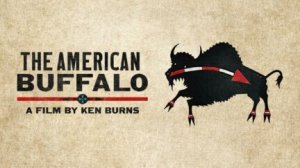 “This film will be the biography of the continent’s most magnificent species, an improbable, shaggy beast that nonetheless has found itself at the center of many of our nation’s most thrilling, mythic, and sometimes heartbreaking tales. It is a quintessentially American story, filled with a diverse cast of fascinating characters. But it is also a morality tale encompassing two important and historically significant lessons that resonate today.” – Ken Burns Website. I’m looking forward to this October 16 and 17.
“This film will be the biography of the continent’s most magnificent species, an improbable, shaggy beast that nonetheless has found itself at the center of many of our nation’s most thrilling, mythic, and sometimes heartbreaking tales. It is a quintessentially American story, filled with a diverse cast of fascinating characters. But it is also a morality tale encompassing two important and historically significant lessons that resonate today.” – Ken Burns Website. I’m looking forward to this October 16 and 17. It upsets me to read that “progressive” university students support the terrorist organization Hamas which is backed by Qatar and Iran under the pretense that it’s the real government of Palestine. The reports of Hamas’ attack against Israel read as war crimes, not legitimate protests against Palestinian problems. I stand by Israel against these barbaric terrorist organizations that won’t leave it alone.
It upsets me to read that “progressive” university students support the terrorist organization Hamas which is backed by Qatar and Iran under the pretense that it’s the real government of Palestine. The reports of Hamas’ attack against Israel read as war crimes, not legitimate protests against Palestinian problems. I stand by Israel against these barbaric terrorist organizations that won’t leave it alone.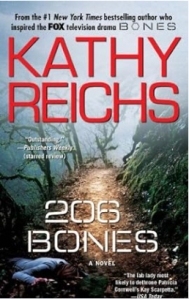 I continue to enjoy the Kathy Reichs “Temperance Brennan” series of novels, having just ordered the 12th book in the series 206 Bones. I started reading these novels to learn more about the inspiration behind the “Bones” TV series and have not been disappointed. They read well, often put Temperance in danger when she goes into the field on her own recognizance, and have plenty of humor.Temperatures are falling in the South and I very much approve of that since I don’t like the summer heat. As a Leo, I know I should like sunshine, but I much prefer falling leaves and snow storms. I must admit, though, that as I grow older, cold weather bothers me more.
I continue to enjoy the Kathy Reichs “Temperance Brennan” series of novels, having just ordered the 12th book in the series 206 Bones. I started reading these novels to learn more about the inspiration behind the “Bones” TV series and have not been disappointed. They read well, often put Temperance in danger when she goes into the field on her own recognizance, and have plenty of humor.Temperatures are falling in the South and I very much approve of that since I don’t like the summer heat. As a Leo, I know I should like sunshine, but I much prefer falling leaves and snow storms. I must admit, though, that as I grow older, cold weather bothers me more.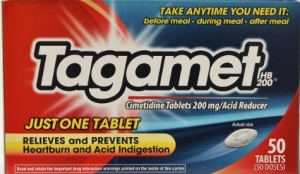 As I fight against the stomach infection I got in June from unknown sources, I see that even after two rounds of antibiotics (along with green tea), the old medication Tagament that cured my stomach when this first happened years ago may prove to be the most effective. When I first had it, it was a prescription drug. Now it’s OTC. I’m feeling better.
As I fight against the stomach infection I got in June from unknown sources, I see that even after two rounds of antibiotics (along with green tea), the old medication Tagament that cured my stomach when this first happened years ago may prove to be the most effective. When I first had it, it was a prescription drug. Now it’s OTC. I’m feeling better. It’s been interesting noting the difference between “Chicago Fire” and the older series “Emergency.” The fire trucks on “Emergency” hit the burning structure with water immediately while “Chicago Fire” sends firefighters into the burning building first to search for those trapped and/or injured without charging up a hose. The “Chicago Fire” approach makes for good drama but intuitively looks like a wrong-headed way to fight fires. My own experience comes from a hands-on Navy fire fighting school. And yes, we learned that water will put out an oil fire.
It’s been interesting noting the difference between “Chicago Fire” and the older series “Emergency.” The fire trucks on “Emergency” hit the burning structure with water immediately while “Chicago Fire” sends firefighters into the burning building first to search for those trapped and/or injured without charging up a hose. The “Chicago Fire” approach makes for good drama but intuitively looks like a wrong-headed way to fight fires. My own experience comes from a hands-on Navy fire fighting school. And yes, we learned that water will put out an oil fire.
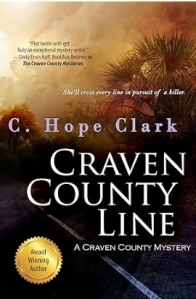 I’m happy to see that Hope Clark, a long-time force behind the site Funds for Writers, is maintaining a high-impact novelist career with her books, The Carolina Slade Mysteries, The Edisto Island Mysteries, and The Craven County Mysteries. The books are compelling and well-written, If you haven’t found them yet, you have gems awaiting you. I enjoy these books that are set in the South where Hope lives with her husband who was in law enforcement. Each of the series has believable characters fighting against real problems.
I’m happy to see that Hope Clark, a long-time force behind the site Funds for Writers, is maintaining a high-impact novelist career with her books, The Carolina Slade Mysteries, The Edisto Island Mysteries, and The Craven County Mysteries. The books are compelling and well-written, If you haven’t found them yet, you have gems awaiting you. I enjoy these books that are set in the South where Hope lives with her husband who was in law enforcement. Each of the series has believable characters fighting against real problems.–Malcolm



